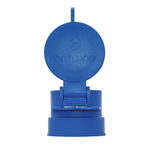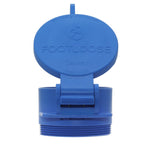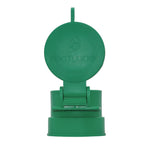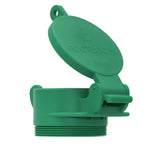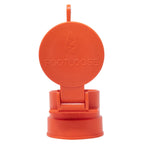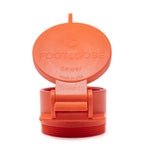You have no items in your shopping cart.
You probably don’t think much about the plumbing pipes that run through your home, except when they’re not working properly! Whether you’re hiring a professional plumber or trying your hand at some do-it-yourself plumbing, it’s important to understand the different types of piping available and which type of piping will be best suited to fit your home’s needs. And recognizing the different types of water lines being used within your home is crucial to understanding the corresponding repair technique.

Types of Plumbing Pipes
Finding the right pipe for your home is a long-term decision that will impact the water in and around your home. Here are the most common types of water piping to consider.
Polyvinyl Chloride (PVC) Pipes

This plastic plumbing pipe is the most widely installed choice for new home construction and home renovations, as it’s made from inexpensive, durable materials.
Pros: This type of piping offers a lightweight and flexible solution and is quickly and easily installed. These types of pipes are known to be strong and corrosion-resistant, promising long-lasting durability at an inexpensive price-point.
Cons: PVC pipes can potentially leak toxins into the water supply. Examples are dioxin, which is present during the PVC production process, and chemical solvents from where the pipes were joined together. To be safe, consider installing a water filtration system.
PEX Pipe

PEX piping is one of the newest types of flexible, plastic piping that requires leak-free, minimal maintenance and can be quickly installed in residential and small commercial spaces. It is rigid enough to withstand water supply pressure but flexible enough to get through spaces for easy installation.
Pros: Once installed, PEX piping requires minimal maintenance and offers the optimum water distribution in a space. Its leak-free nature makes it a stronger candidate for some spaces compared to other metal water lines, such as copper piping.
Cons: Initial costs are slighter higher with PEX piping. It can also only be used to supply water and cannot be used outdoors because UV rays can damage its plastic outer layer.
Copper Pipes

Copper piping is an attractive choice for buildings with exposed ducts due to its color and industrial style. It is a popular choice for water supply plumbing lines as it does not pose any health risks and can handle heat and pressure well. It comes in both rigid and flexible tubing.
Pros: Copper piping can be either rigid or flexible and often has a high heat tolerance. It is also easily recycled, offering monetary value in many cases.
Cons: This type of piping can be expensive, and it is known to develop pinhole leaks—or worse, corrode and impede water flow activities after years of use.
Black Steel Pipes

Black steel pipes are made of steel that hasn’t been coated with paint yet, so it forms a dark surface through iron oxide during the manufacturing process. These industrial pipes are often used for transporting gases inside and outside of the home, water wells, and sewage systems.
Pros: Black steel pipes are strong and don’t require regular maintenance, making them a long-lasting solution.
Cons: This type of pipe is never used for transporting potable water. It is known for corroding, which can lead to unsafe chemicals and minerals dissolving into the water. Corrosion also leads to clogging.
Galvanized Pipes

Galvanized steel piping is common in older homes, mostly due to it being a strong solution. However, it’s less commonly used in residential and commercial applications today.
Pros: The primary advantage of galvanized steel water lines is that they are extremely strong.
Cons: This type of piping will typically only last 50 or so years before it needs to be replaced or repaired, which should be handled by a professional. It will eventually corrode, blocking the water flow and potentially passing lead into the water supply.
Corrugated Stainless Steel Tubing (CSST)
CSST piping is used for flexible water distribution  piping systems in plumbing applications. It’s a simple and quick solution for new home builds, renovations, and re-piping.
piping systems in plumbing applications. It’s a simple and quick solution for new home builds, renovations, and re-piping.
Pros: CSST piping is corrosion-resistant and provides an environmentally safe option that is approved for use nationwide. It’s easy to install since it doesn’t require any special tools and typically has minimal fittings.
Cons: In situations where CSST is improperly installed, it can pose a liability to the home. It can also be easily damaged by sharp objects and cannot be bent too much without further damage.
Acrylonitrile Butadiene Styrene (ABS) Pipes
 ABS piping is typically used for vent and drain lines and looks similar to PVC piping with the exception of strength and color. This black piping is also more pliable but stronger than PVC piping and works well in cold temperatures.
ABS piping is typically used for vent and drain lines and looks similar to PVC piping with the exception of strength and color. This black piping is also more pliable but stronger than PVC piping and works well in cold temperatures.
Pros: ABS pipes are often used in underground and exterior environments, as they can withstand cold temperatures. They are easier to install, less expensive, don’t erode (unlike the metal alternatives), and offer a strong water flow rate thanks to their smooth interior.
Cons: In some instances, ABS pipes are not permitted by building code, and they can warp or deform when they are exposed to certain temperatures.
Measuring Pipe Sizes Guide
Here’s how to properly measure a pipe for size:
- Determine Male or Female: Threads, or the little grooves on the ends of pipes, enable pipes to fit together. Male threads are on the outside, female threads are on the inside. If the pipe has no threads, measure the outside of the pipe with a measuring tape.
- Male Threads, Divide by Pi: For male threads, measure the outer circumference of the pipe with a flexible measuring tape and divide that length by pi, or 3.14159.
- Female Threads, Use Ruler: For female threads, measure the distance across the middle of the pipe from inside edge to inside edge, excluding the pipe’s walls.
- Convert to Nominal Pipe Size: Convert your diameter (male threads) to nominal size if it’s smaller than 14 inches (360 mm). Anything smaller than that doesn’t need to be converted as it will be equal to the nominal diameter already.
Common Tools and Supplies for Working With Pipes
Having the right plumbing tools on hand can make DIY home repairs much easier. While a plunger should be the first tool you use to address a clogged sink or toilet, here are a few other essential tools to have on hand when working with pipes:
- Tongue-and-Groove Pliers
- Thread Sealing Tape
- Basin Wrench
- Adjustable Wrench
- Tubing Cutter
- Drain Auger
- Pipe Wrench
- Compression Sleeve Puller
Screwdrivers, Allen wrenches, hacksaws, and drain snakes can also be helpful, depending on the situation.
Remember, while there are some things you can take care of around the house, bigger repairs and replacements almost always require a plumbing professional.



